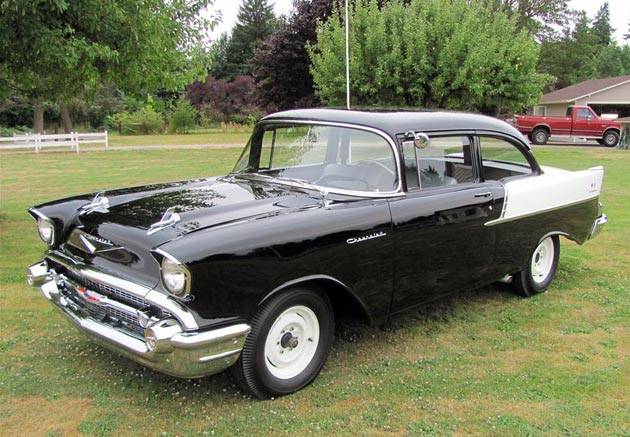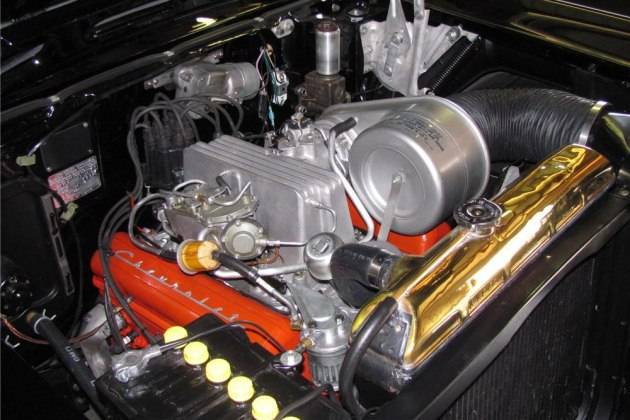 Manufacturer : Honda
Manufacturer : Honda
 Productions : 1981
Productions : 1981
 Engine : Twin cylinder Air-cooled Four-stroke, Single Over Head Cam Parallel twin.
Engine : Twin cylinder Air-cooled Four-stroke, Single Over Head Cam Parallel twin.
 Transmission : -
Transmission : -
Honda introduced several 200 cm³ bikes with similar engines but different body variations in the 1980s. The model introduced in South Africa and Pakistan was known as the CD 200 “Road Master”. It was a detuned version of the Honda CD185 twin. The CD 200 sold more for its looks then performance as its square speedometer, huge front and rear mudguards, twin chrome exhausts, neatly tucked in choke behind handle bars and a chrome plated fuel tank with the Honda logo contributed to an interesting styling.
The bike was a cheap commuter vehicle with a claimed 100 miles (160 km) per gallon and a smooth ride. Too slow for a 200 cm³ bike, its top speed was only 70 mph (112 km/h) as the engine was detuned to keep maintenance cost to a minimum. This bike targeted users who wanted a comfortable cheap transport suitable for long routes with low maintenance. Use of simple drum breaks in rear and front and a single carburetor were other measures used to keep the maintenance low. The bike accelerated hard up to 65 mph (105 km/h); after that it was a flat ride. The engine had to be revved very hard to create any kind of excitement as the bike was too heavy (140 kg) for an engine that produced a modest 16 bhp.
This model suffered from various manufacturing faults like a noisy cam chain and an unreliable electrical starter (later models were upgraded with 12 volts CDI system in the UK.). In the UK the CD200 was affected by legislation restricting learner riders to bikes limited to 125 cm³ and 12bhp. Honda introduced a 125 cm³ Benly after the CD200 was withdrawn.The CD 200 Road Master was sold in South Africa until late 2004 and was used mainly as a courier/delivery bike.It retained the 6 volt electrics and points ignition.
January 23, 2011 – 10:39 am
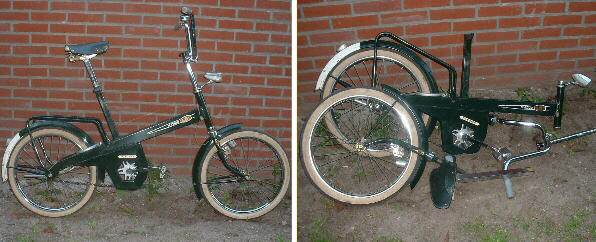
|
| Fongers M2000 1968 |
Specification:
Manufacturer : Fongers
Production : 1968
Type : Folding Bike
Source : oudefiets.nl
January 22, 2011 – 10:41 pm
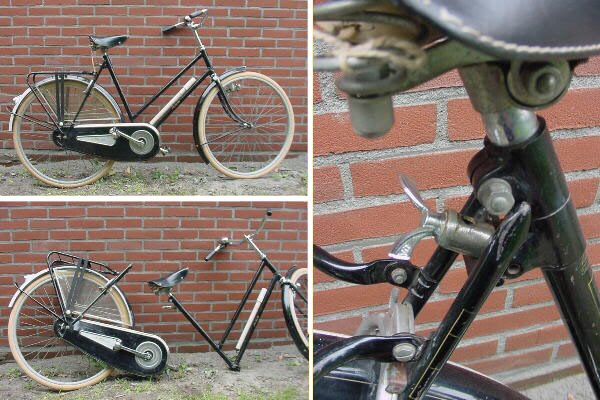
|
| Batavus Portable 1965 |
Specification:
Manufacturer : Batavus
Production : 1965
Type : Folding Bike
Source : oudefiets.nl
August 21, 2010 – 11:14 pm

|
| Fongers M66 1966 |
Specification:
Manufacturer : Fongers
Production : 1966
Type : Folding Bike
Source : oudefiets.nl
September 24, 2010 – 1:17 am
Chevrolet NASCAR Black Widow 1957 specifications :
Manufacturer : Chevrolet
Productions : 1957
Engine : fuel-injected, 283-cubic-inch, 283-horsepower small-block Chevy engine, three-speed manual transmission, six-lug wheels, 20-gallon gas tank and no radio, cigarette lighter or arm rests.
Source : Autoblog
August 16, 2010 – 10:34 pm
Gazelle Kwik Step 1964 Specificatioon :
Manufacturer : Gazelle
Country : Netherland
Tire : 24 X 1 3/8
Type : Folding Bike
Source and Photo Credit : sepedaonthel.com
February 7, 2011 – 10:40 am
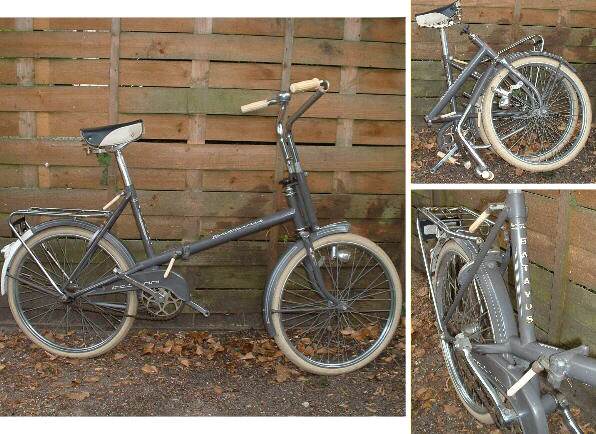
|
| Batavus Batavouw 1969 |
Specification:
Manufacturer : Batavus
Production : 1969
Type : Folding Bike
Source : oudefiets.nl
 Manufacturer : Jaguar
Manufacturer : Jaguar
 Productions : 1954-1957
Productions : 1954-1957
 Engine : initially 3.4L and eventually uprated to 3.8 litres in the late fifties
Engine : initially 3.4L and eventually uprated to 3.8 litres in the late fifties
 Source : netcarshow.com
Source : netcarshow.com
The Jaguar D-Type, like its predecessor the C-Type, was a factory-built race car. Although it shared the basic straight-6 XK engine design (initially 3.4L and eventually uprated to 3.8 litres in the late fifties) with the C-Type, the majority of the car was radically different. Perhaps its most ground-breaking innovation was the introduction of a monocoque chassis, which not only introduced aircraft-style engineering to competition car design, but also an aeronautical understanding of aerodynamic efficiency. The Jaguar D-Type was introduced purely for competition, but after Jaguar withdrew from racing, the company offered the remaining, unfinished chassis as the roadgoing Jaguar XK SS, by making changes to the racers: adding an extra seat, another door, a full-width windshield and primitive folding top, as concessions to practicality. However, on the evening of 12 February 1957, a fire broke out at the Browns Lane plant destroying nine of the twenty five cars that had already been completed or in semi-completion. Production is thought to have included 53 customer D-Types, 18 factory team cars, and 16 XKSS versions.
read more »
![]() Manufacturer : Honda
Manufacturer : Honda![]() Productions : 1981
Productions : 1981![]() Engine : Twin cylinder Air-cooled Four-stroke, Single Over Head Cam Parallel twin.
Engine : Twin cylinder Air-cooled Four-stroke, Single Over Head Cam Parallel twin.![]() Transmission : -
Transmission : -


